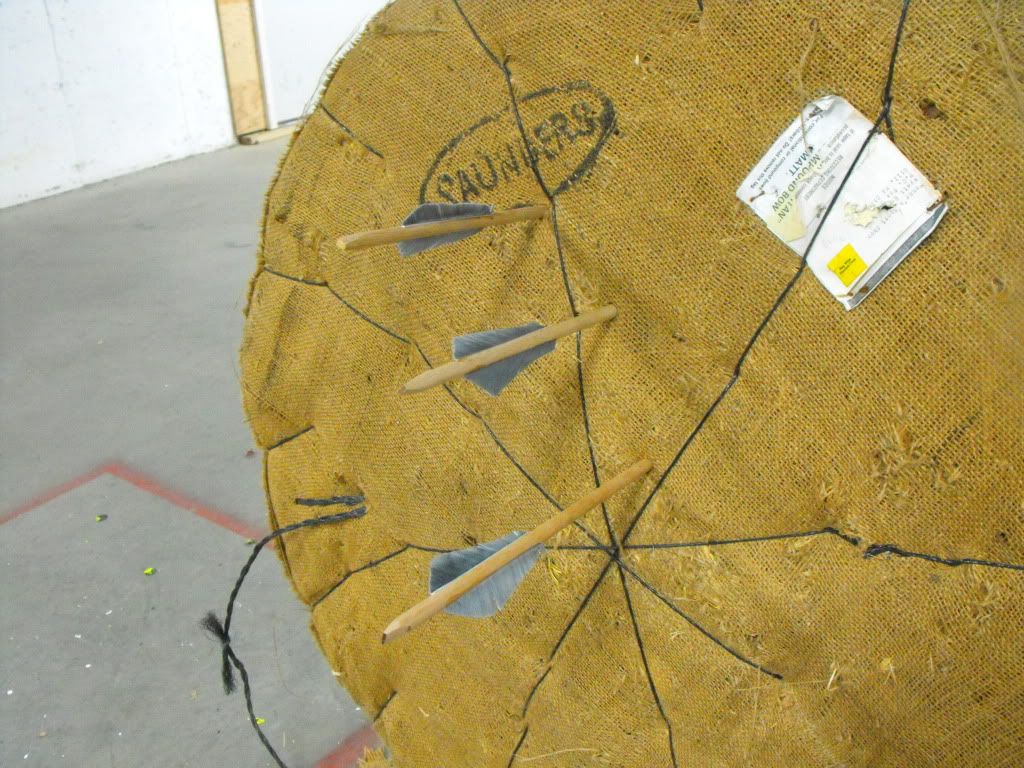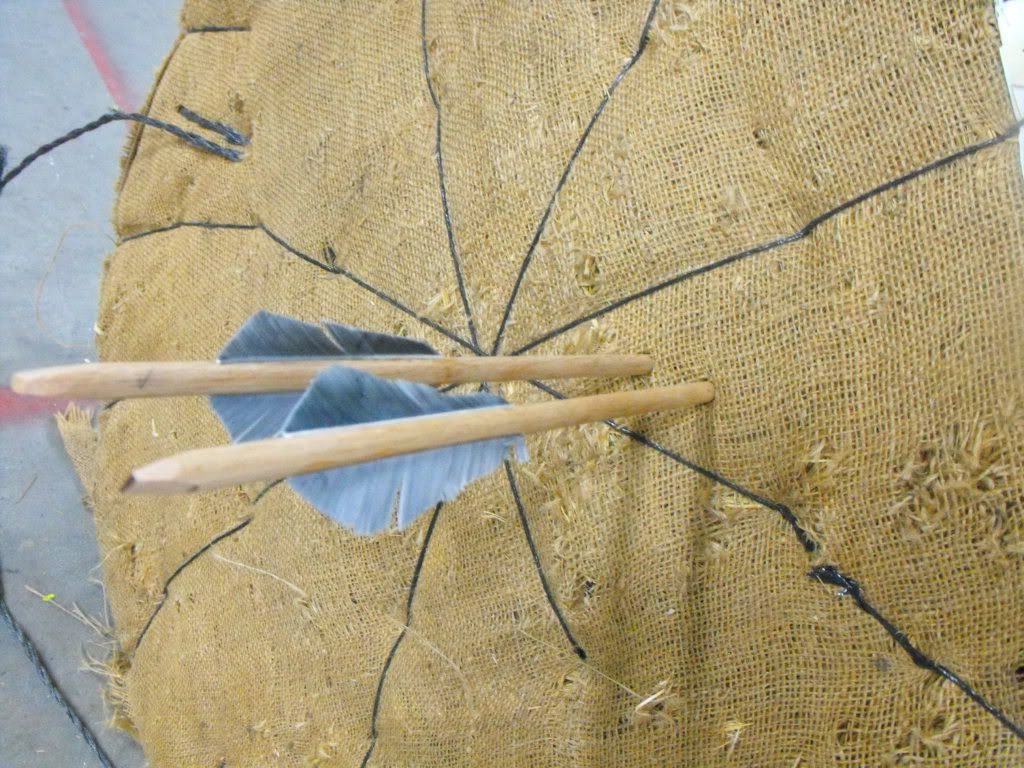Now I have started testing the crossbow.
I did have to modify the rolling nut, and enlarge the space between the lugs, as it was too narrow for my bolts. Many medieval crossbows (and most if not all modern ones) had bolt clips, and I don't really care for them, and with the Spanish bows, they never had clips in the first place. The bolt is wedged into the lug, which holds it reasonably well.
Then, I had an issue with spanning it. When you span the crossbow, ideally, the string pushes the nut back and it locks into place as the trigger, pushed by it's spring, moves into the and against the sear. This wasnt quiet happening, so I glued on a very thin wedge shaped shim of sorts to the back surface of the nut. It worked perfectly, and when I span it now, the nut does it's thing and it is ready to shoot.
Here is the nut with the bit of antler glued on. I filed it down, and it was a simple job. About 20 minutes of filing gave me the little wedge shape I needed, with the high end of the wedge to the rear.

And it all worked out well. The first youtube video (I hope I got this right), shows the spanning and shooting process. It is an indoor pistol range I am using, and the crossbow is resting on a couple of sandbags, which puts the trigger up of the bench surface.
http://www.youtube.com/watch?v=GhYU4k17a_oIt worked. It is about 34 seconds long, hoperfully not too boring.
You can see the velocity i am getting, maybe 160 fps? I think this is pretty decent for a light crossbow, and the medieval crossbows. According to someone who posted on another site:
Jean Liebel in the book Springalds and Great Crossbows the initial velocity was 50 to 60 metres/second in general for medieval crossbows.
Factor in also that crossbow bolts are very heavy. I use 3/8" oak doweling for the basis for my bolts, and 125 grain heads, which are pretty light, really. You have slower velociites, but heavy bolts, which do some damage to anyone unfortuante to be at the pointy end. And, a true replica of a Spanish military crossbow would have at least a 350-400 lb. prod minimum.

is my very first 3-shot group once I determined that the bow worked. No sights, and you aim using the bolt tip as an aiming reference. It takes a lot of time, like with primitive bows, to start hitting consistently. And this shot shows my second (two!) shot group. I was so excited, I decided to not fire that third bolt and ruin a nice group


Here is the back of the target. The bolts were punching mostly and all the way through. Some areas are denser on the target, which is a bit old, but overall, decent penetration.

And finally, while i was at the range, a zombie showed up! Oh no, but luckily I was armed, conquistador style. Got him in the head, but not the brain area, alas, and he then bit me and I am writing this as a zombie armburster. Dont send flowers, as I wont appreciate them in my new dead state.
http://www.youtube.com/watch?v=FMt9y72KbuMNotice the target shake when the bolt hits? This stuff is fun.
Now, a few more words. Just a short time at the range, maybe an hour, and I had an issue come up. The rear bone bearing block became loose. That shows the forces at work even with such a low powered weapon. It will be an easy fix, and many heavier bows had the front and back bearing blocks pinned into place with small rivets. That is something I will not neglect in the future, and it is all about learning by doing.
Hopefully, more and better videos later, but for now, I am done with this weapon. And I have already started my next project, and will spend the first day of the new year in my shop. All of you have a fantastic, boozy (or not boozy) celebration, and cheers to all. I welcome any comments as always. Thanks.
Dane